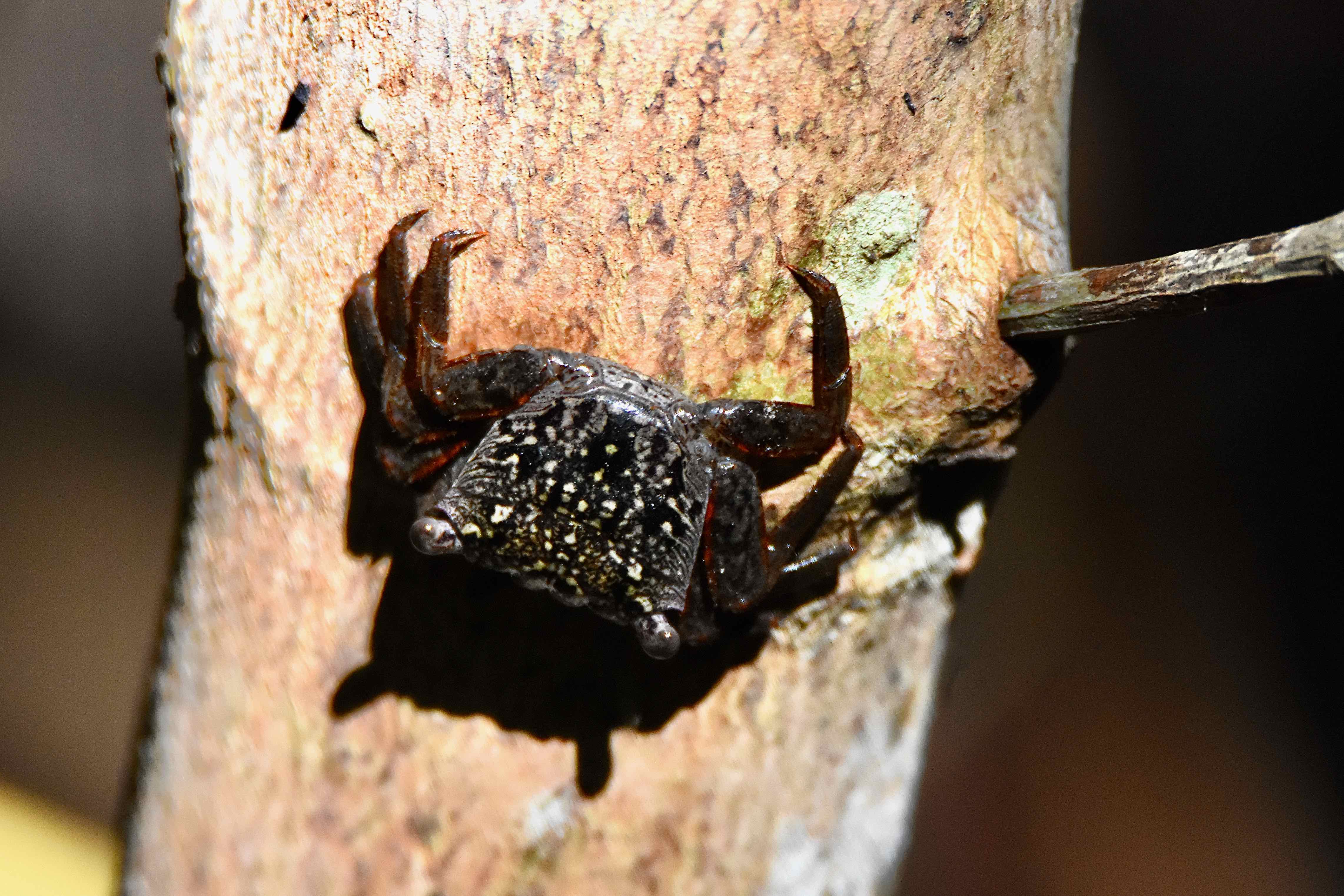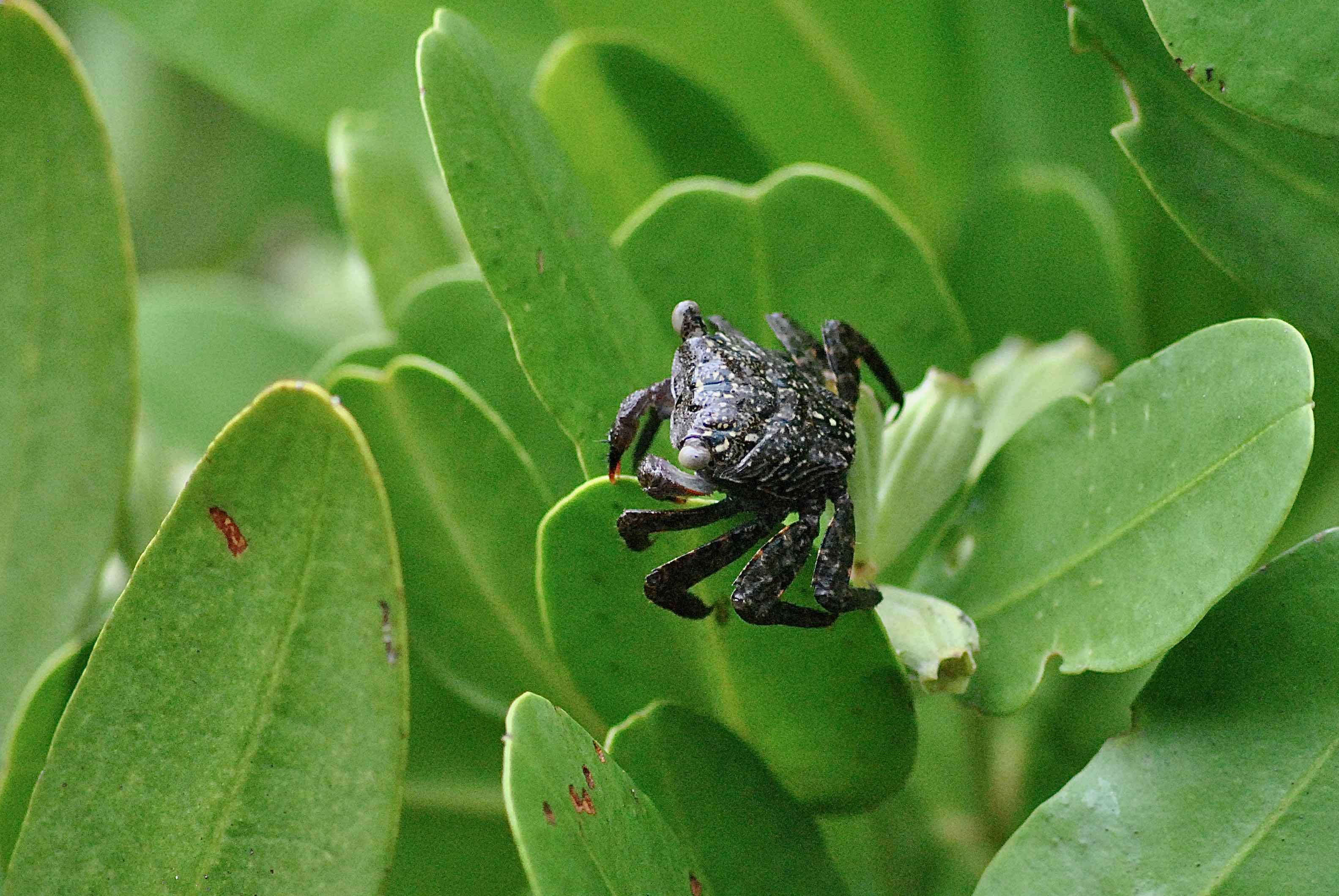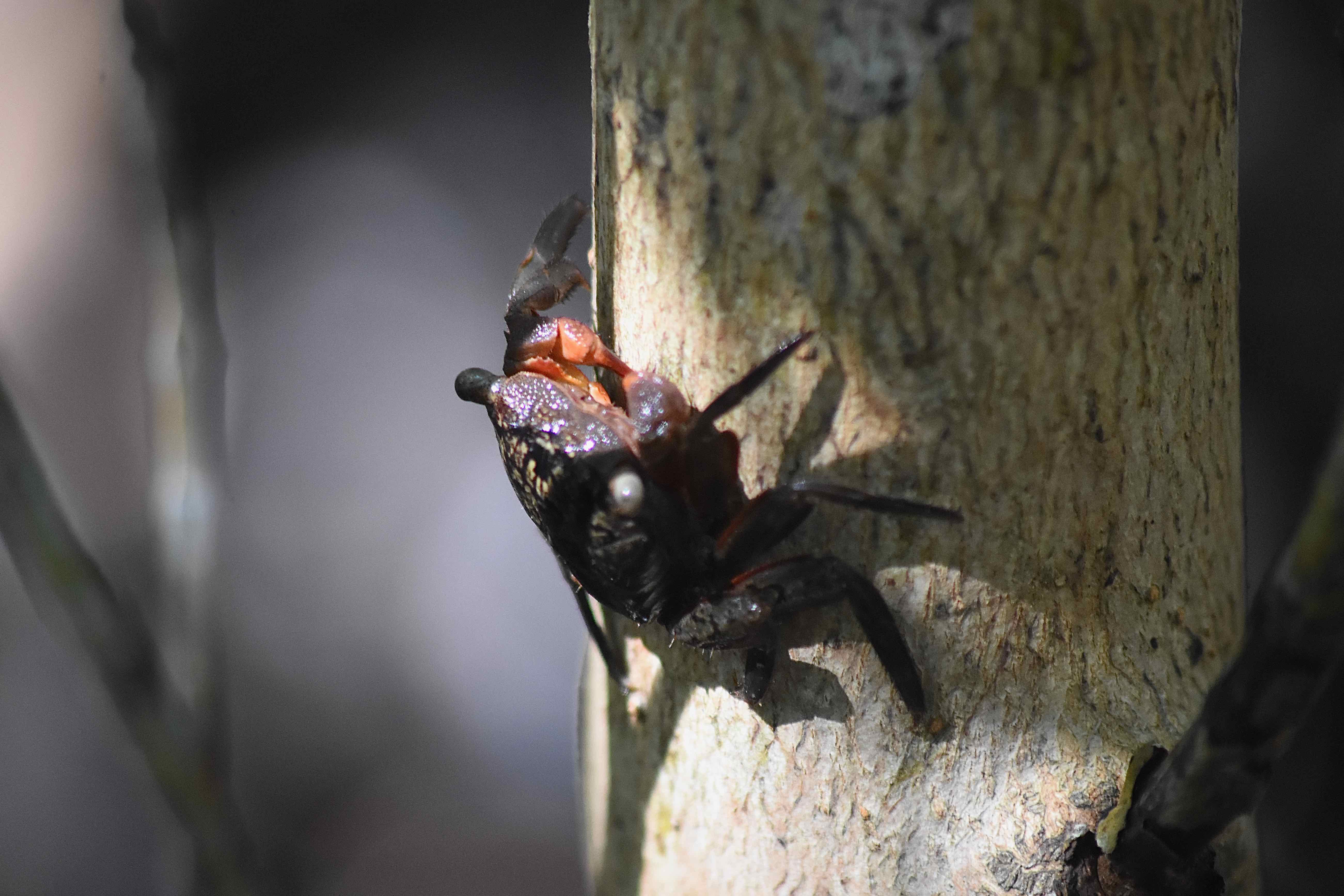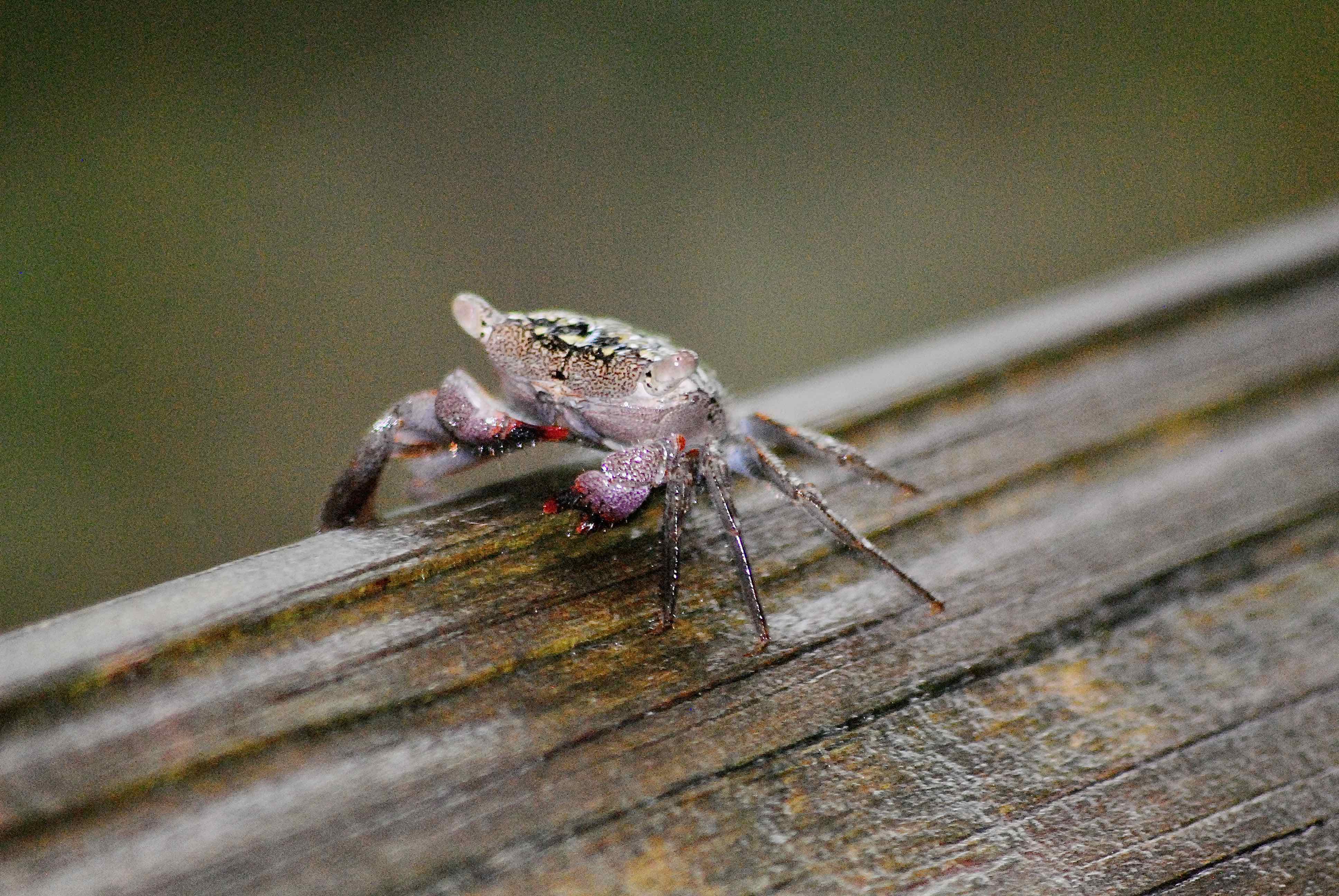
Mangrove Tree Crab, photographed at J.N. "Ding" Darling National Wildlife Refuge, Sanibel, Lee County, in October 2016.
First thing you think of if you see a dark, multi-legged critter crawling through a tree is spider. But if the tree is a mangrove, you might be looking at this guy instead — the mangrove tree crab.
Scientifically, it's known as Aratus pisonii, and it's found along the Atlantic coast from Florida to northern Brazil, and along the Pacific from Nicaragua to Peru. It climbs to the tree tops at high tide, and ventures onto the ground at low tide. They can be found in estuaries and in marine environments, wherever mangroves grow. They are mainly found on red mangroves — the so-called walking tree — but spend time on black and white mangroves as well.
They are small as crabs go, with a carapice — the shell — that maxes out at about an inch across. The average mangrove tree crab is less than an inch across, with females slightly smaller.
Mangrove tree crabs are mottled brown to olive green, but at first glance they look black while holding onto the bark of a tree. The eyes are widely separated, at the corners of the carapice. It has sharp tips at the end of each leg that allow it to climb. The easiest way to distinguish the sexes is by examining the abdomen — it's broader in females and can flex to allow mom to carry her eggs.
The mangrove tree crabs you see have beaten some severe odds to get where they are. Females carry as many as 35,000 fertilized eggs on their bellies until they're ready to hatch, when they climb down, shake their bodies and deposit the youngins in the water. So much for motherly love, crab style. She'll do this as many as six times throughout the year.
Once they leave mom, the larvae are targets for predators, including fish and filter feeders like barnacles. Only about 0.04 percent of the larvae will become juvenile crabs, and only 17 percent of those will survive to adulthood. Mangrove tree crabs mate when the female is molting. They breed throughout the year, with egg-hatching peaking during the wet season or during lunar cycles.
The larvae go through four separate stages before becoming juvenile crabs, a process than can take four or five months. The salinity, or salt content, and water temperature are factors that influence how long it takes. The amount of time it takes a mangrove tree crab to reach full size is variable — for a male, as short as a year or as long as five, depending on conditions. Crabs in mature mangrove forest attain bigger size, less so in less-developed forests.
Mangrove tree crabs are omnivores at all stages of their lives. The adults have a fondness for mangrove leaves as a mainstay of their diet but they will eat other vegetation, including algae and seagrasses, and some animal matter as well. Once they reach adulthood, mangrove tree crabs are still vulnerable to predators, including birds, but they do have a few tools to help them survive. For one, they can be quick, scurrying as fast as a meter per second. And they can leap to the ground or into the water, if necessary. Jumping into the water, however, can mean landing in the mouth of a hungry fish.
Mangrove tree crabs are members of Sesarmidae, a family of crabs.



